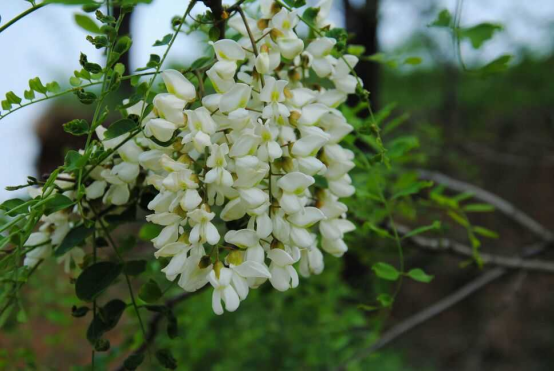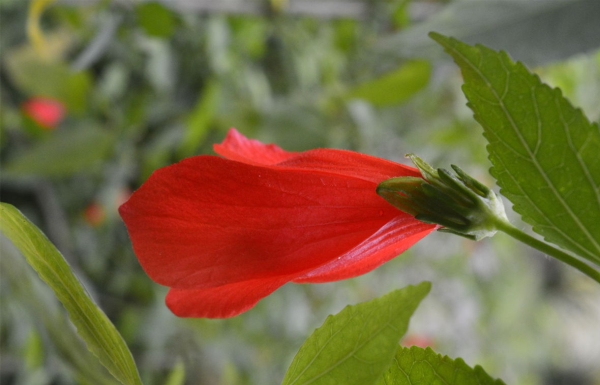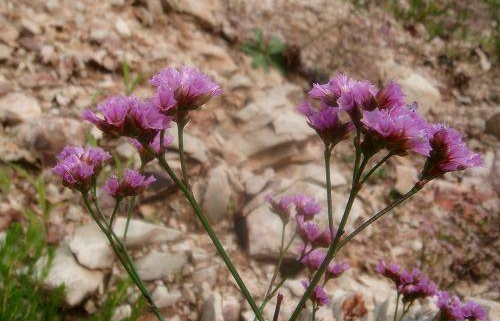Disease Control of Flos Sophorae
1. Scorched leaf disease of Sophora japonica
Symptoms:
The edge of the leaves of the locust tree becomes withered and yellow, and the serious condition may lead to the shedding of the flowers of the locust tree. The disease may be caused by bacteria or a lack of calcium.
Prevention and control methods:
Can not cultivate locust trees under high temperature, high temperature bacteria multiply fast, and to control the humidity. Ensure the healthy growth of the root system. Take precautions and spray germicides once a month, especially when the room is hot and hot in summer. When the disease occurs, spray the agents for the prevention and control of bacterial diseases and replenish calcium in time.

two。 Skin rot of Sophora japonica
Symptom analysis:
At this time, the common disease of Sophora japonica. It can happen at any stage of the growth of Sophora japonica. There will be small black spots on the trunk, and the trunk will gradually wither.
Prevention and control methods:
Watering Sophora japonica in time, replenishing nutrition and applying phosphorus and potassium fertilizer can enhance the disease resistance of the plant. Pay attention to the treatment of the cut after pruning. Disinfect the cut to prevent bacterial infection.
After reading the introduction of the editor, do you think the locust flowers are easy to breed? You might as well buy some seeds to try, I believe you can successfully plant locust saplings!
Control methods of Flos Sophorae Flower Diseases
Scorched leaf disease of Sophora japonica
Symptom analysis
Scorch leaf disease first harms the leaves and makes the edges of the leaves withered and yellow. If the disease is serious, it will also cause the flowers to fall off. There are two main causes of Flos Sophorae scorch leaf disease, one is caused by bacteria, the edge of the leaf will produce brown patches, the leaf color becomes lighter, and finally all wither. Under the influence of the pathogen, the leaves gradually infect the tree trunk, and the gradual spread will affect the growth of the whole plant.
Another reason is that the plant lacks calcium, which is one of the elements that can not be reused in the plant. When the calcium salt is precipitated, the calcium deficiency of the plant will be obvious, and the plant will have local necrosis.
Prevention and cure method
To ensure that the maintenance temperature is appropriate to avoid too high temperature. Control the humidity to avoid excessive humidity.
Protect the growth of the root system and avoid damaging the root system in the process of changing the basin and turning the soil.
Take precautions and spray germicides once a month, especially when the room is hot and hot in summer. When the disease occurs, spray the agents for the prevention and control of bacterial diseases and replenish calcium in time.
Skin rot of Sophora japonica
Symptom analysis
This is a rare disease in family flower cultivation, but it is common in Sophora japonica. It will appear at all stages of the growth of Sophora japonica. The main manifestations are necrotic disease spots on the branches, gradually expanding or spreading the branches for a week, slightly invaginated. As the bacteria spread, many small black spots appeared on the tree trunk, and the branches slowly withered, possibly accompanied by underground decay.
Prevention and cure method
In the process of pruning, avoid overweight pruning, timely watering, appropriate supplement of phosphorus and potassium fertilizer, enhance the disease resistance of the plant. During the construction in spring and autumn, the scissors were treated and coated with plant ash or stone-sulfur mixture to prevent and control bacterial infection.
Cut off the diseased branches in time and deal with them centrally. Spray carbendazim suspension in time when the disease occurs.
Propagation and cultivation techniques and pest control measures of Robinia pseudoacacia
Robinia pseudoacacia, also known as rich tree, originated in Spain, butterfly legume deciduous trees. The double season Robinia pseudoacacia is quite rich in the elegant demeanor of garden woody flowers, with high ornamental value; it is enough to purify the ecological environment and has high environmental protection value; it has a wide range of uses and has high economic value, so it can be said to be a truly rich tree, which is called the green gold variety in the 21st century.
1 biological characteristics
Sophora japonica is a butterfly-shaped flower and legume tree with a height of 10 to 12m, a straight trunk, long sparse branches and grayish brown to brown bark. Leaves alternate, 17-19, pinnately compound, oval to oval, smooth, bright green, larger than Robinia pseudoacacia leaves. It blossoms from May to August, and can blossom continuously in spring, summer and autumn in southern China. Inflorescences axillary, densely forming racemes, pendulous, long 8~12cm, flowers nearly 10cm in size. Robinia pseudoacacia not only likes the excellent environment with plenty of sunshine and air circulation, but also can withstand the severe cold of-25 ℃. In China, no matter neutral soil, acid soil or light alkaline soil, it grows well from seashore plain to mountains 2100m above sea level except Heilongjiang. Its wide development prospect is determined by its adaptability, easiness (roots or branches can be propagated), fast-growing (seedlings can be as high as 2m in the same year), regeneration (burying roots in the first year, many seedlings can be born in the next year) and its economic and ecological values such as high-quality honey and powder source, ornamental, greening, sand fixation and soil conservation.
2 breeding technology
The flower of Sophora japonica is unfruitful, and there are no seeds for reproduction, so it can only be propagated asexually by burying roots, cutting branches or grafting.
2.1 Root-burying breeding
This is the most important and commonly used breeding method, with a survival rate of 85% to 95%.
2.1.1 seed preparation. The roots of Robinia pseudoacacia can be introduced from the defoliation to the germination of Robinia pseudoacacia in spring, and the roots can be buried and preserved in sandy soil before planting, so as to control the humidity of sandy soil, which can not make the roots dehydrated and withered, nor can they become moldy and rot due to too much water. The main and lateral roots of 1-year-old and 2-year-old Sophora japonica should be selected, and the diameter of 0.5~1.0cm should be selected. Cut the lateral root at 20~30cm, and the amount of root cutting should not exceed 1 / 2 of the lateral root, so as not to affect the normal growth and flowering of the plant.
2.1.2 soil preparation and seedling raising. The nursery land chooses the sandy loam with deep soil layer, flat terrain, convenient drainage and irrigation and no source of infection of diseases and insect pests. At the beginning of April, the root was taken out, cut into 5~7cm root segment, and ditched along the border. The row spacing of the plant was generally set as 20cm × 30cm, and then the root segment was laid flat in the ditch, covered with fine sandy soil 3cm, poured through the fixed root water, and the seedlings could emerge in 20 days.
2.1.3 Seedling management. Water the seedlings in time after emergence, and pay attention to drainage in case of continuous overcast and rain. In the seedling stage, we should pull up the grass in time, erase the lateral buds, and pay special attention when wiping the buds. Only one strong bud is left on one root segment, and the topsoil is loosened shallowly. Do not hurt the tender and weak short roots. Timely control of diseases and insect pests, appropriate fertilization, long-term drought with clear fecal water to resist drought, and topdressing to promote the health of seedlings.
2.1.4 Transplant and management. The seedlings were transplanted and planted after falling leaves at the end of autumn or before sprouting in spring next year. Dig holes and fertilize according to the plan, fill and compact the soil after planting, pour through the fixed root water, and the survival rate is generally more than 95%. After autumn, the height of the tree can reach 2cm, the DBH is 3~5cm, and it blossoms in the second year. The trunk of the fragrant flower locust tree is tall and straight, the crown is open, the tree shape is beautiful, the flowers are gorgeous, and the aroma is striking.
2.2 Branch cutting propagation
The main results are as follows: (1) the cutting time is the same as that of burying roots. (2) the diameter 8~20mm woody branches were selected and cut into cuttings with long 15cm length; the upper incision was cut flat to the bud package 1~2cm, and the lower incision was 45 °oblique and 5mm away from the bud package. Soak the lower end with 50mg/kg rooting powder solution (which can also be soaked with "920") for 3 hours, then remove and set aside. (3) the requirement of soil preparation is the same as before, the width of 70cm plastic film is selected after soil preparation, the ridge width 60cm is laid, and the flat film of ridge spacing 30cm is laid. According to the plant and row spacing of 20cm × 20cm, the branches are inserted into the plastic film at an angle of 45 °, and one small arch basin for every 2 ridges is used to increase temperature and preserve soil moisture. (4) after seedling emergence, take out the seedling and seal the soil in time to keep the temperature and humidity of the bed soil; uncover both sides of the greenhouse film at high temperature to ventilate and cool down; wipe off the lateral buds and strengthen the management of fertilizer and water, the cuttings can grow to more than 1m and 1.5m in the same year.
3 cultivation and management
Huaihua prefers a warm and humid climate and a sunny and well-ventilated environment. Neutral soil with moist, good drainage, deep and loose soil layer is better, and acid and alkaline soil can also adapt. Robinia pseudoacacia is cold-resistant and drought-resistant. It can be cultivated in open field in the north, and its cultivation management is relatively extensive. It can mainly do a good job in seedling stage management.
When the seedlings grow 4-5 leaves, the weeds should be pulled manually, and herbicides can be used when the seedlings grow to 40cm. Generally, the lateral buds (heart) are pinched before 3cm, so as not to affect the growth and straightness of seedlings. When they grow to 60cm or so, to prevent the seedlings from lodging caused by strong wind, you can use stick binding to prevent them. Fertilize the seedlings above 50cm and sprinkle them with urea or diammonium before rain. Fertilize once every 20 days.
4 Disease and pest control
Before planting the roots of Sophora japonica, control underground pests and spray with 1000 times of methylethion; locusts or grasshoppers should prevent locusts or grasshoppers from encroaching on the trunk and tender leaves; in summer, attention should be paid to the control of black insects at the tips and young leaves of Sophora japonica seedlings. 50% phoxim EC or 40% omethoate EC 1500-2000 times solution spray is commonly used. Around the beginning of autumn, the root of Sophora japonica is easy to suffer from rot or nematode nibbling, which is treated with 50% thiophanate methyl wettable powder and 50% phoxim EC 1000 times.
- Prev

Matters needing attention in Platanus orientalis Culture
Although the vitality of Xuan Ling flower is tenacious and its maintenance is simple, there are still many places that need to be paid attention to if we want to raise it well. We should ensure that the potted soil is changed every spring, new rotten leaf soil is added, and it is pruned in time to promote the growth of more new shoots. In addition, fertilizer should be applied every semimonthly during the breeding period.
- Next

How to raise the blood herb
The requirement of soil blood grass to the soil is relatively high, the soil should be loose, breathable and relatively soft. In general, we can configure this kind of soil by ourselves, mix it with rotten leaf soil or a portion of peat and perlite, and then sterilize it.
Related
- Fuxing push coffee new agricultural production and marketing class: lack of small-scale processing plants
- Jujube rice field leisure farm deep ploughing Yilan for five years to create a space for organic food and play
- Nongyu Farm-A trial of organic papaya for brave women with advanced technology
- Four points for attention in the prevention and control of diseases and insect pests of edible fungi
- How to add nutrient solution to Edible Fungi
- Is there any good way to control edible fungus mites?
- Open Inoculation Technology of Edible Fungi
- Is there any clever way to use fertilizer for edible fungus in winter?
- What agents are used to kill the pathogens of edible fungi in the mushroom shed?
- Rapid drying of Edible Fungi

